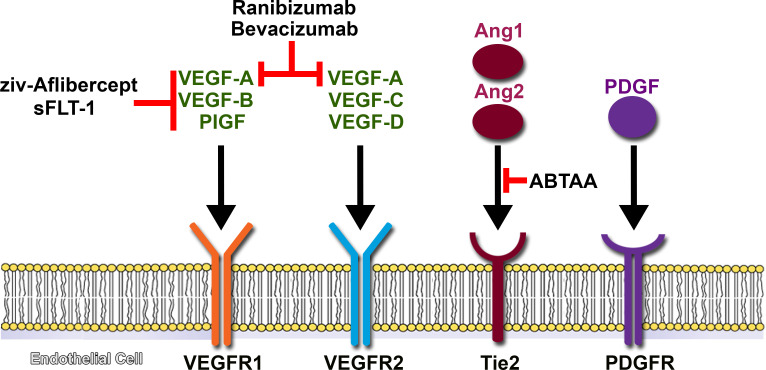Figure 1.
Promising targets for antiangiogenesis in nAMD. The main goal of gene therapy in this condition is to continuously express antiangiogenic factors and lead to a more sustainable treatment. Some have already been extensively studied in the past for intravitreal treatment of nAMD, like bevacizumab and ranibizumab, while others like Angpt2-binding and Tie2-activating antibodies (ABTAA) are currently being investigated and might be useful for combination therapy. The platelet-derived growth factor (PDGF) pathway also represents another potential target as it mediates the recruitment and survival capabilities of pericytes and might be implicated in the development of subretinal fibrosis. Ang1, angiopoietin-1; Ang2, angiopoietin-2; nAMD, neovascular age-related macular degeneration; PIGF, placental growth factor; VEGF, vascular endothelial growth factor.

